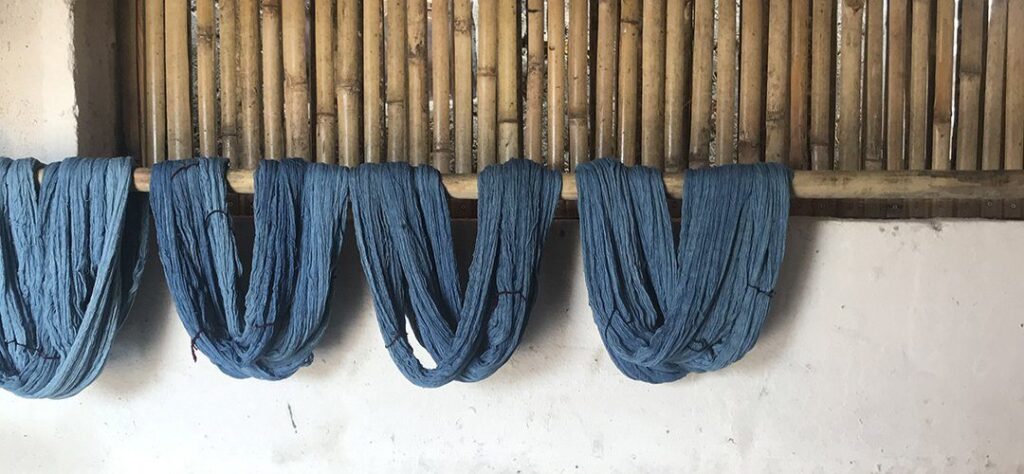Kutch is like no other place I’ve ever seen. Kutch means something which becomes intermittently wet and dry. It’s a vast area comprised of hundreds of nomadic tribes who each have their own aesthetic culture and tribal regulation. Kutch existed for centuries on barter systems. Shepherds would give wool to weavers, who in return would weave them in return for extra wool.

The area was devastated by a catastrophic earthquake in 2001 that scars it till today. Yet, the people of Kutch have only emerged stronger from the calamity. An array of Indian nonprofit organizations covered the region doing exceptional work to rejuvenate trade and empower the artisans of Kutch.
The artisans weave absolutely every imaginable type of textile, using hundreds of intricate weaving techniques, embroidery techniques, and dying techniques. Here we were privileged to meet one of India’s masters of Indigo dyes, Shyam ji.
The world of Indigo is an incredible one and I have been obsessed with this plant ever since I attended the Indigo Sutra conference in Kolkata.
The ranges of shades created with indigo are beautiful and varied. It is a fascinating plant possessed of the best qualities. It is used in agriculture instead of pesticides and was believed to protect the skin of those who wore garments dyed with indigo. During the dying process, the indigo is placed in a series of vats and comes to life with fermentation. The dyers speak to their vats, cajole them and even taste them to see if they are satisfied with the way it’s happening. It is both a science and an art.
Shyam ji was explaining that he only trusts his earth, as his earth has never required pesticides or synthetic seeding, and goes as far as to take his own grains with him when he travels.
Then we discussed all the countries he had been to, to hold his indigo workshops. He was very proud to say that he had been to Kuwait, and that he had given a workshop at the Bait Sadu!
Nur
(Images courtesy of Nur Kaoukji)
